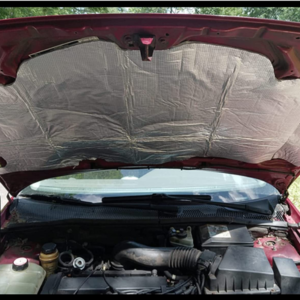
A car transmission is a vital component that transfers power from the engine to the wheels, enabling the vehicle to move. It serves as a gearbox, utilizing a series of gears to alter the rotational speed and torque produced by the engine, matching it to the requirements of the car’s current driving conditions.
Types of Car Transmissions
There are two primary types of car transmissions: manual and automatic.
- Manual Transmission: In a manual transmission, the driver manually selects the gear ratios using a clutch pedal and a gear shifter. This requires more driver engagement and skill, but offers greater control over the vehicle’s performance.
- Automatic Transmission: An automatic transmission autonomously selects the appropriate gear ratios using a hydraulic or electronic system. This provides greater ease of operation and smoother driving, but may not offer the same level of control as a manual transmission.
Functions of a Car Transmission
- Torque Multiplication: The transmission increases torque, the twisting force that propels the vehicle, particularly at lower speeds. This allows the engine to operate at its most efficient range.
- Speed Matching: The transmission adjusts the rotational speed of the engine to match the driving conditions. This ensures that the engine doesn’t over-rev or stall, and that the wheels receive the appropriate power for acceleration or cruising.
- Reverse Gear: The transmission provides a reverse gear, allowing the vehicle to move backward.
- Neutral Gear: The transmission has a neutral gear, disengaging the engine from the wheels, allowing the vehicle to coast or be towed.
Maintaining Your Car’s Transmission
Regular maintenance is crucial for extending the lifespan of your car’s transmission. This includes:
- Checking Transmission Fluid Level: Regularly checking and maintaining the proper transmission fluid level ensures lubrication and smooth operation.
- Transmission Fluid Changes: Following the recommended transmission fluid change intervals helps remove contaminants and maintain fluid viscosity.
- Addressing Transmission Noises or Issues: Promptly addressing any unusual noises, vibrations, or gear shifting issues can prevent further damage and costly repairs.
So, when to change Car Fluid Transmission?
The recommended timeframe for changing your vehicle’s transmission fluid depends on several factors, including the type of transmission (automatic or manual), the make and model of your vehicle, your driving habits, and the climate you live in.
Here’s a general guideline:
- Automatic transmissions: Every 30,000 to 60,000 miles, or every 2-3 years, whichever comes first. If you do a lot of towing or driving in stop-and-go traffic, you may need to change it more often.
- Manual transmissions: Every 30,000 to 50,000 miles, or every 3-5 years, whichever comes first.
Here are some signs that your transmission fluid may need to be changed:
- Slipping or hard shifting: This is a sign that the fluid is not lubricating the gears properly.
- Burning smell: This could mean that the fluid is overheating or contaminated.
- Dark or discolored fluid: This means that the fluid is breaking down and needs to be replaced.
- Noise: If you hear whining, grinding, or clunking noises when you shift gears, it could be a sign that the fluid is low or dirty.
If you’re not sure when your last transmission fluid change was, it’s always best to err on the side of caution and get it checked out by a mechanic. They can check the fluid level and condition and let you know if it needs to be changed.
Here are some additional tips:
- Consult your owner’s manual for the specific recommendations for your vehicle.
- Use the type of transmission fluid recommended by your manufacturer.
- Consider getting a transmission flush if you’ve never had one before or if your fluid is very dirty. This will remove all of the old fluid and replace it with new.
- Changing your transmission fluid is a relatively inexpensive preventive maintenance task that can help extend the life of your transmission.
It’s also a good idea to check your transmission fluid level and color regularly. The fluid should be a bright red color and should not smell burnt. If it’s dark or smells burnt, it’s time for a change.
Here are some signs that your transmission fluid may need to be changed:
- Slipping or hard shifting: This is a common sign that the fluid is not doing its job properly.
- Clunking or grinding noises: These noises can be caused by worn-out gears or debris in the fluid.
- Vibration: This can be caused by an imbalance in the fluid pressure.
- Leaking: If you see fluid leaking from your transmission, it’s a sign that there’s a problem.
If you’re experiencing any of these symptoms, it’s best to take your car to a mechanic to have it checked out.






